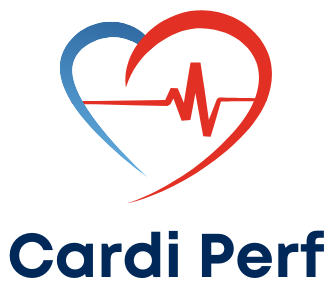The Ideal Body Weight Calculator for Perfusionists is an indispensable tool that moves beyond general estimates to provide the precise measurements vital for patient safety during cardiopulmonary bypass (CPB) and extracorporeal life support (ECLS). Accurate weight metrics are foundational for drug dosing and establishing safe pump and ventilator parameters, particularly in patients with extremes of body weight.
IBW, ABW & LBW Calculator
This calculator ensures your pre-operative planning and intra-operative management are guided by the most clinically relevant weight, reducing the risk of both under- and over-dosing and associated complications.
1. The Core Formulas: IBW, ABW, and LBW
In clinical practice, a patient’s Actual Body Weight (ABW) can be misleading, especially in obese individuals. Adipose (fat) tissue is less metabolically active and less perfused than lean tissue. Many hydrophilic (water-soluble) drugs, like Heparin, distribute primarily into lean body mass.
For this reason, perfusionists rely on estimated weights: Ideal Body Weight, Adjusted Body Weight, and Lean Body Weight.
A. Ideal Body Weight (IBW) – The Standard Baseline
The most common formula for estimating IBW is the Devine Formula (1974), which correlates height to a weight associated with minimal mortality. It serves as the baseline for many critical calculations in medicine:
- IBW (Male):
- IBW (Female):

B. Adjusted Body Weight (ABW) – The Compromise
When a patient is significantly overweight or obese (e.g., above IBW), the non-lean tissue still contributes to a drug’s volume of distribution. Adjusted Body Weight (ABW) is used to account for a portion of the excess weight, providing a more pharmacokinetically sound dose for certain hydrophilic medications.
- ABW:
The correction factor (CF) of (or
) acknowledges that some of the excess body mass will still absorb the drug. Perfusionists often use ABW or a similar lean-body calculation for initial Heparin dosing in obese patients.
C. Lean Body Weight (LBW) – The Metabolically Active Mass
Lean Body Weight (LBW) is the estimate of a patient’s fat-free mass. While more complex formulas exist, for perfusion, LBW is often used interchangeably with or as a refinement of IBW, especially in studies advocating for reduced drug dosing in the obese population to prevent overdose and bleeding risk. Studies have shown that dosing Heparin based on LBW can reduce total drug and reversal agent (Protamine) doses, leading to less post-operative bleeding and transfusion requirements.
2. Clinical Significance: Why IBW is Critical in Perfusion
The accuracy of the Ideal Body Weight Calculator for Perfusionists directly impacts several major areas of patient management:
1. Calculating Drug Dosages (Focus Keyword Application)
This is the most direct and crucial application of the Ideal Body Weight Calculator for Perfusionists.
- Heparin Dosing: Traditionally, Heparin is dosed at
of Total Body Weight (TBW). However, in obese patients, this leads to an overdose because Heparin distributes poorly into fat. Dosing based on IBW or ABW for the initial bolus is increasingly advocated to achieve the target Activated Clotting Time (ACT) without excessive plasma concentrations, thus preventing severe intra-operative hemodilution and post-operative hemorrhage.
- Protamine Dosing: Since Protamine sulfate is used to neutralize the circulating Heparin at the end of CPB, an accurate initial Heparin dose (based on IBW/ABW) results in a more precise Protamine requirement, minimizing the risk of Protamine-related side effects or Protamine overdose (which can itself cause anticoagulation).
2. Estimating Blood Volume and CPB Prime
A patient’s estimated blood volume (EBV) is proportional to their lean mass. IBW is a key factor in calculating a more accurate EBV for pre-operative planning.
- Prime Volume: By calculating the patient’s approximate EBV using their IBW, the perfusionist can better estimate the required prime volume for the CPB circuit to maintain an acceptable initial hematocrit (Hct) upon initiation of bypass, which is vital for oxygen-carrying capacity.
3. Mechanical Ventilation Parameters (Post-CPB)
Though often managed by Anesthesia/ICU, the perfusion team must be aware that the post-bypass ventilator settings are heavily dependent on IBW.
- Tidal Volume (VT): Lung-protective ventilation strategies mandate that tidal volume be calculated based on IBW, not ABW, to prevent barotrauma and volutrauma to the lungs. Using a patient’s excessive Actual Body Weight will result in dangerously high tidal volumes. A perfusionist’s role is to ensure all care team members are using the correct IBW metric.
3. Audience Specificity: Why Perfusionists Need This Tool
The field of extracorporeal circulation (ECC) is unique because the entire blood volume is manipulated, making drug and fluid distribution paramount. Perfusionists require a reliable Ideal Body Weight Calculator for Perfusionists because:
- Safety Margin: In CPB, the therapeutic window for Heparin is narrow. Over-anticoagulation (from using TBW in an obese patient) can lead to hemorrhage, while under-anticoagulation can result in circuit clotting and microemboli. IBW/ABW provides a critical middle ground.
- Pharmacokinetics in ECC: The hemodilution from the prime volume significantly alters drug concentrations. Using a precise weight metric ensures the initial loading dose of Heparin is correct before the effects of hemodilution and hypothermia complicate the pharmacokinetics.
- Standardization: Having a dedicated, validated IBW calculator helps standardize pre-bypass drug protocols across different institutions and providers, a cornerstone of high-quality patient care.
4. How to Use the Calculator
To utilize the Ideal Body Weight Calculator for Perfusionists for safe and effective CPB management, follow these simple steps:
- Input Patient Data: Enter the patient’s Height (in inches or centimeters), Sex (Male/Female), and Actual Body Weight (in kilograms).
- Calculate IBW: The calculator will first determine the Ideal Body Weight using the Devine formula.
- Calculate ABW: If the patient’s Actual Body Weight is significantly greater than the IBW, the calculator will automatically compute the Adjusted Body Weight (ABW) using the
correction factor.
- Apply Metric:
- Initial Heparin Dose: Use the calculated Adjusted Body Weight (ABW) or Ideal Body Weight (IBW) for the
initial Heparin bolus.
- Ventilator Settings: Use the Ideal Body Weight (IBW) to calculate the lung-protective tidal volume.
- Initial Heparin Dose: Use the calculated Adjusted Body Weight (ABW) or Ideal Body Weight (IBW) for the

By integrating the Ideal Body Weight Calculator for Perfusionists into your pre-bypass checklist, you ensure a higher standard of care, leading to reduced complications, lower transfusion rates, and improved patient outcomes in cardiac surgery.




